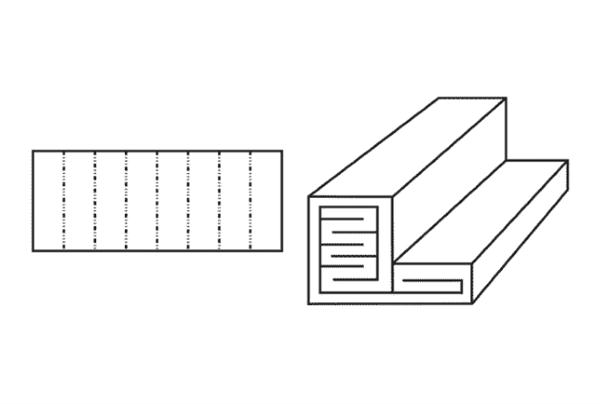Fibre Box Association Box Types
International Fibreboard Case Codes
02 Series
Slotted Boxes
Each of the adjacent codes indicates a specific type of folding used on your corrugated box shell.
Different folds yield different benefits, and meet different packaging needs, i.e. bulge resistance, tensile strength, humidity control.
Customized protective inner packaging may be placed within the shell to stop your product from being damaged during transit.
Slotted Boxes: International Fibreboard Case Code: 02 Series
Slotted box styles are generally made from one piece of corrugated or solid fiberboard. The blank is scored and slotted to permit folding. The box manufacturer forms a joint at the point where one side panel and one end panel are brought together. Boxes are then shipped flat to the user. When the box is needed, the box user squares up the boxes, inserts products, and closes the flaps. The International Fibreboard Case Code refers to these styles as Slotted-Type Boxes, while the carrier classifications call them Conventional Slotted Boxes.

Half Slotted Container (HSC) - 0200

Regular Slotted Container (RSC) - 0201

Overlap Slotted Container (OSC) - 0202

Full Overlap Slotted Container (FOL) - 0203

Center Special Slotted Container (CSSC) - 0204

Center Special Overlap Slotted Container (CSO) - 0205

Center Special Full Overlap Slotted Container (SFF) - 0206

Snap Bottom Container w/ Tuck Top - 0215

Snap Bottom Container w/ RSC Top - 0216

Full Bottom File Box - 0225

Bellows Style Top & Bottom Container - 0226
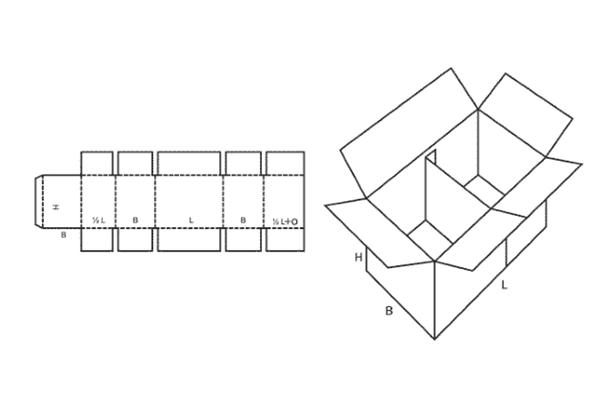
Integral Divider Container - 0228
Telescope Boxes: International Fibreboard Case Code: 03 Series
Telescope boxes usually consist of a separate top, or top and bottom that fit over each other or a separate body. The International Fibreboard Case Code calls these boxes Telescope-Style. The truck and rail classifications call them Telescope Boxes if the cover extends over at least two-thirds of the depth, and Boxes with Covers if the cover extends over less than two-thirds of the depth.

Full Telescope Design (FTD) - 0301

Design Style Container (DSC) - 0306

Double Cover Container (DC) - 0310

Full Telescope Half Slotted Container (FTHS) - 0320

Interlocking Double Cover Container (IC) - 0325

Octagonal Double Cover Container - 0351
Folders: International Fibreboard Case Code: 04 Series
For folders, one or more pieces of the combined board provide an unbroken bottom surface and are scored to fold around a product. The International Fibreboard Case Code describes them as Folder-Type Boxes. The carrier classifications use the term Folders.

One Piece Folder (OPF) - 0401

One Piece Folder - 0403

Wrap Around Blank - 0406

Five Panel Folder (FPF) - 0410

Center Seam FPF - 0411

One Piece Folder with Dust Flaps - 0415

One Piece Folder w/ Dust & Tuck Flaps - 0416

Roll End Tray - 0422

Roll End Tray w/ Locking Cover - 0427
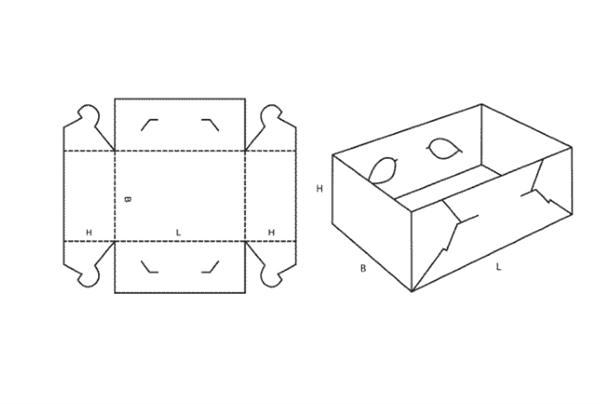
Self Locking Tray - 0457
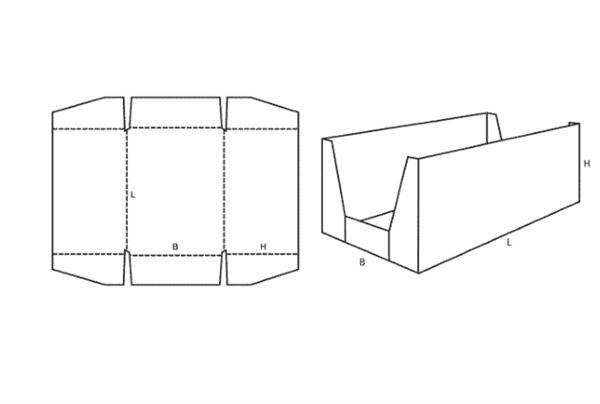
Display Tray Container - 0460
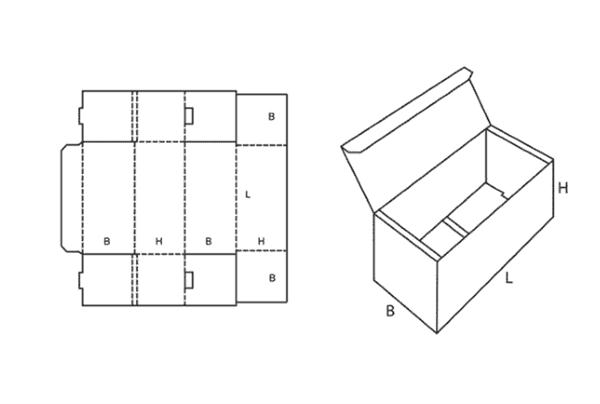
Roll End Tray w/ Tuck Flaps - 0470
Rigid Boxes (Bliss Boxes): International Fibreboard Case Code: 06 Series
The three pieces of a rigid box style include two identical end panels and a body that folds to form the two side panels, an unbroken bottom, and the top. Flaps used to form the joints can be on the end pieces or the body or both. The end panels are attached to the body with special equipment, usually at the user's plant. Six or more joints must be sealed to set up the box before it is filled. The name Rigid Boxes comes from the fact that once the six or more joints are sealed, the box is rigid. The International Fibreboard Case Code identifies these styles as Rigid-Type Boxes. In the carrier classifications, rigid boxes are classified as Conventional Slotted Boxes are Recessed End Boxes.
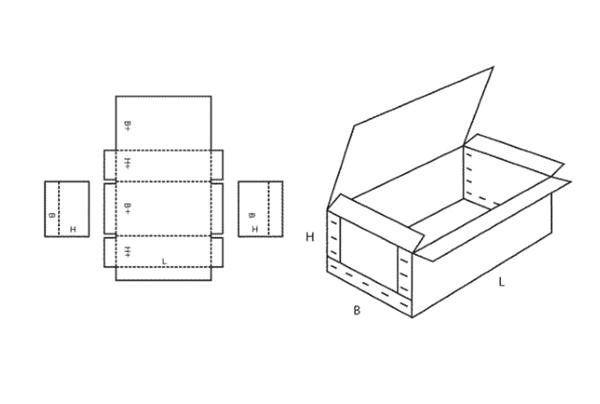
Bliss Style Container W/ End Flaps - 0601A
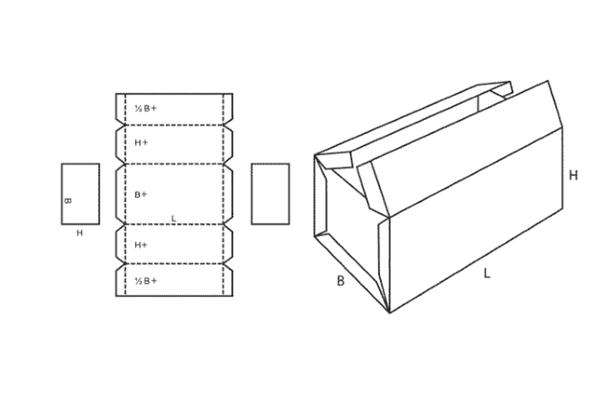
Bliss Style Container - 0606A
Self-Erecting Boxes: International Fibreboard Case Code: 07 Series
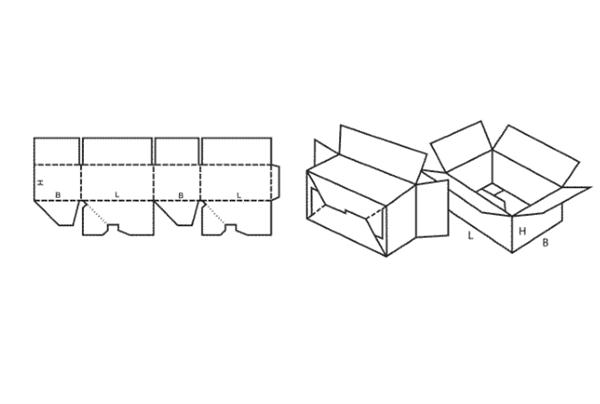
Pre-glued Auto Bottom - 0711

Self-erecting Six Corner Tray - 0760
Interior Forms: International Fibreboard Case Code: 09 Series
Liners, tubes, pads, build-ups, dividers, partitions, and other inner packing pieces can be made in an infinite variety of ways to separate or cushion products, to strengthen the box or to prevent product movement by filling voids. They may be simple rectangles, or scored, slotted, scored and slotted, or die-cut shapes.
Many of the common interior forms have been given International Fibreboard Case Code numbers. The carrier classifications provide specifications for some pieces used in the packing of glassware and other fragile articles.
Pads are plain shapes of corrugated or solid fiberboard. They can be used to fill the space between the inner flaps of an RSC, to completely cover the bottom or top of a box, or to separate layers of product. Vertically, they can be used to separate products.
Tubes are scored rectangles, folded and sometimes joined with tape to form a multi-sided structure open at both ends. When used as sleeves for individual items such as glassware, adjacent shells provide double protection.
Partitions or dividers provide a separate cell for each item in a box. They are used primarily for glassware and other fragile articles.
Inner packing pieces, which are scored and folded, can take many shapes. Included in this group are built-up pads consisting of multiple pieces glued together. Inner packing pieces are used for cushioning, suspension and separation, and to fill voids. The suspension function holds the product away from the walls of the box to lessen the impact of drops or bumps. Completely filling the voids created by irregularly shaped products adds stacking strength to the box.
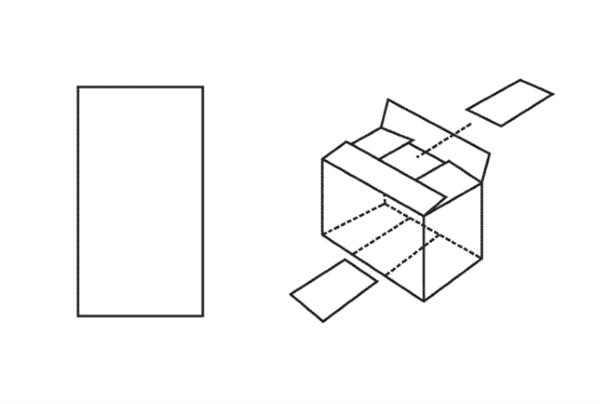
Pads - 0900
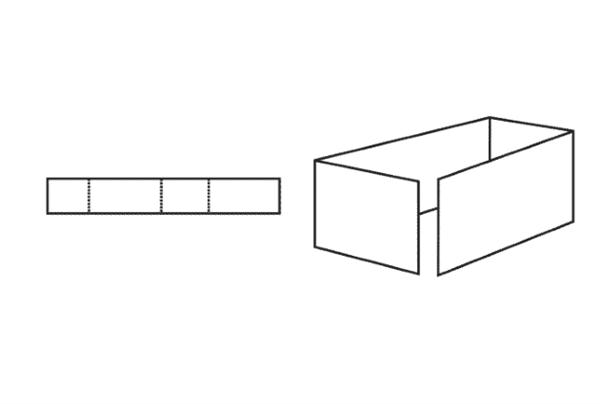
Tube - 0904
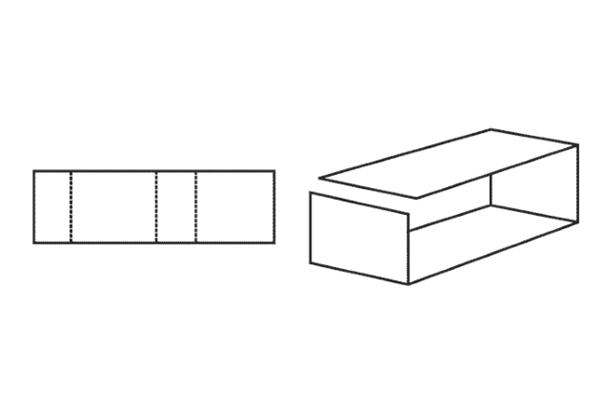
Tube - 0905
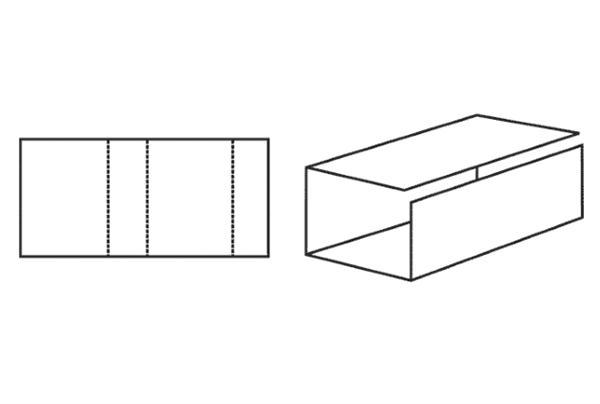
Tube - 0906
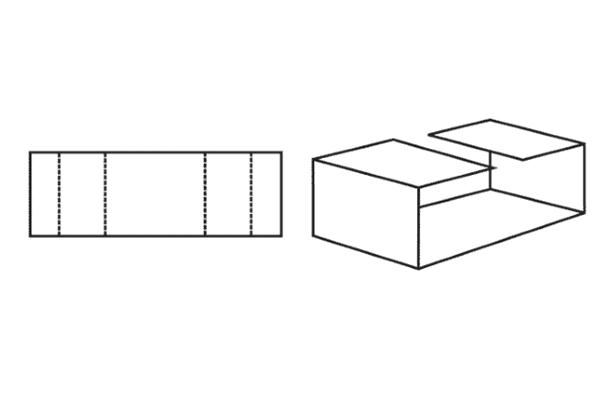
Tube - 0907
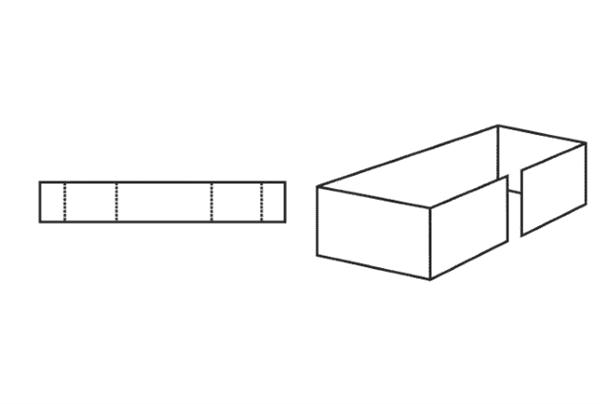
Tube - 0908
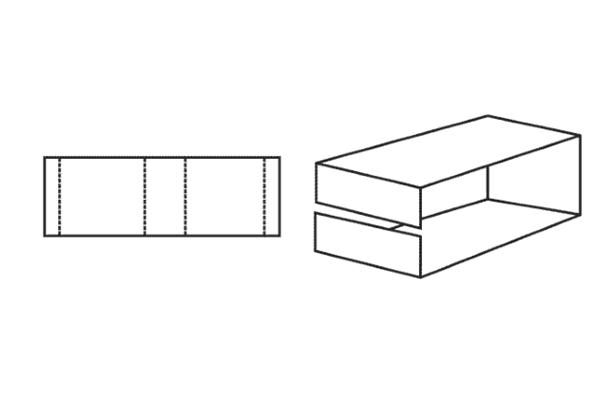
Tube - 0909
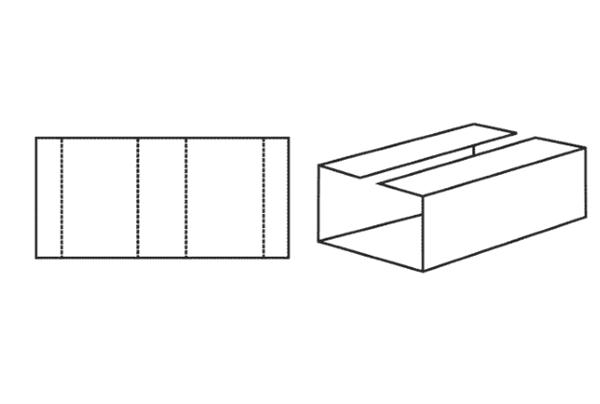
Tube - 0910
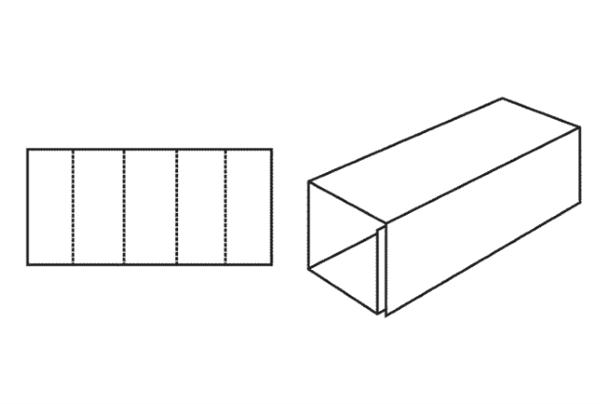
Tube - 0914
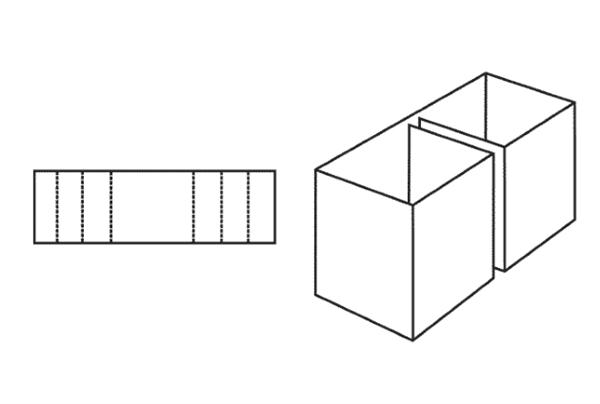
Partition - 0920
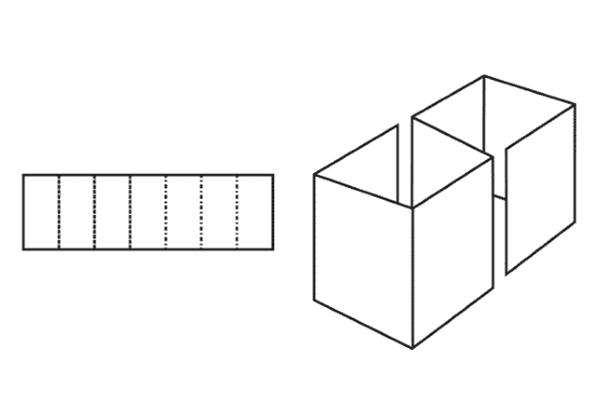
Partition - 0921
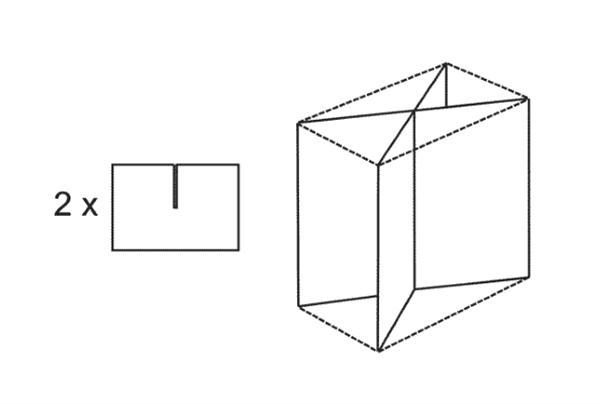
Partition - 0930
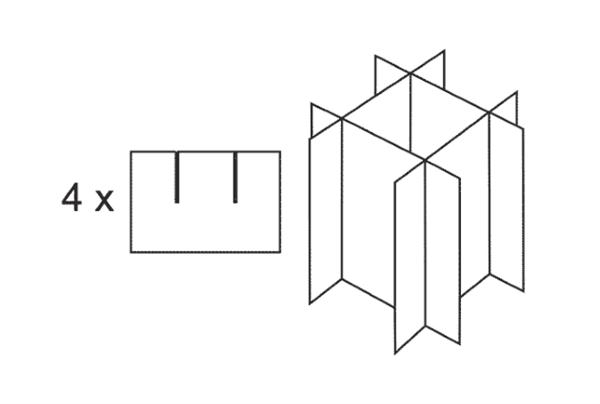
Partition - 0931
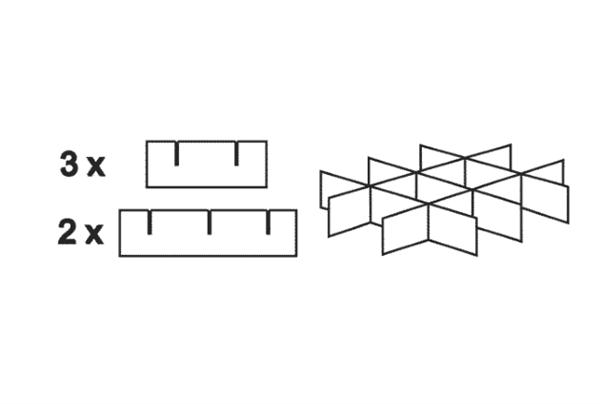
Partition - 0933
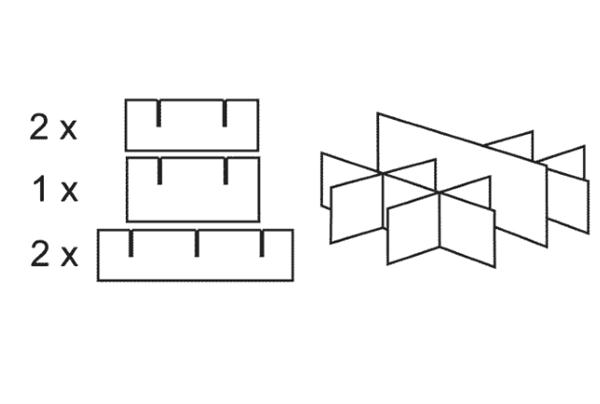
Partition - 0935
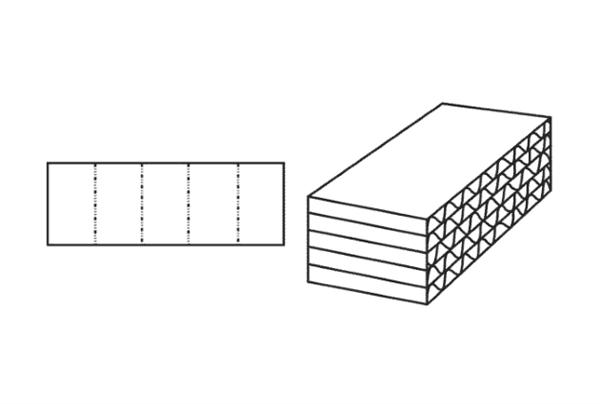
Inner Packing Piece - 0965
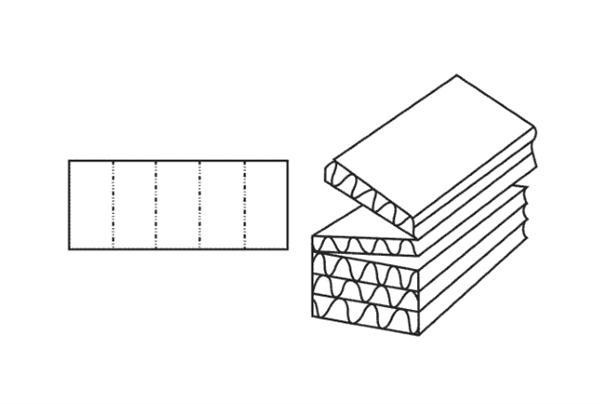
Inner Packing Piece - 0966
